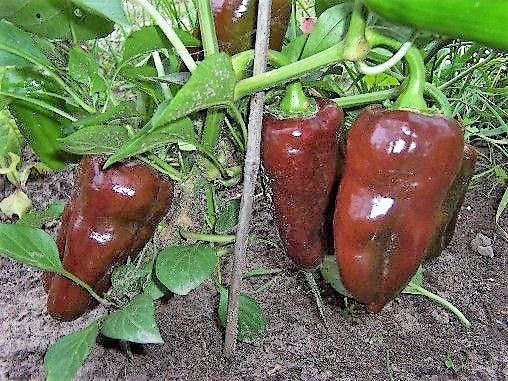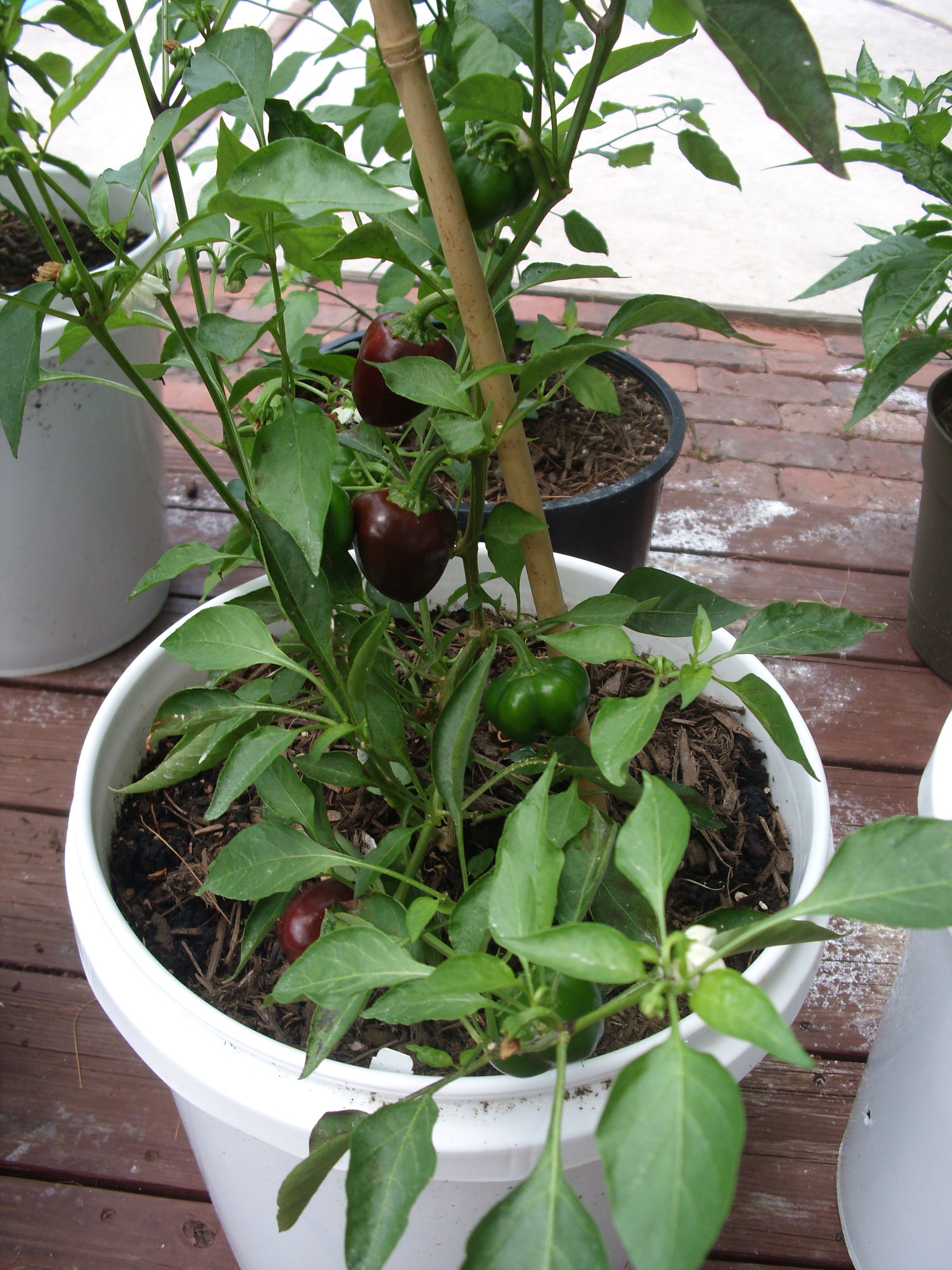Gran's Garden Seeds
Pepper Seeds, Organic Chocolate Pepper Seeds
Pepper Seeds, Organic Chocolate Pepper Seeds
Regular price
$3.50 USD
Regular price
Sale price
$3.50 USD
Unit price
per
Shipping calculated at checkout.
Couldn't load pickup availability
Organic Sweet Chocolate Pepper, (Capsicum annuum)
10 seeds per package
The Chocolate Bell Pepper is a Chocolate colored bell pepper with a very sweet flavor. This early maturing bell pepper turns dark brown on the outside and a deep red on the inside when fully ripened. This Bell Pepper is excellent raw in salads and roasted in other dishes. Also known as Choco, but it does not taste like chocolate. A very unique variety of bell peppers.
Secret: the soil has to be warm (the Sun, seed warming mat, etc.) for them to germinate and continue to thrive and grow,
Organic
Fruits ripen from green to chocolate color with brick red interior
Thick sweet flesh
Great for gardeners in short season areas
60-85 days from transplant
Sweet pepper
Start indoors 8 weeks before last frost
Germination, about 14 days
Sow direct in garden or in large container
Sow, ¼” deep keep lightly moist until germination
Plant outside approx. 18” apart
Full Sun
Peppers germinate best in warm soil. Peppers are one of the most challenging of home garden crops, but most of the difficulty is borne during the plants early life. Pepper seed requires heat to germinate; it just won't do much in cool soil. So the first trick is to find a spot that is steadily warm; above the fridge may work, as might a spot near the woodstove. Sow pepper seeds by late March; they mature later in the season than tomatoes, and to get a good crop of ripe peppers requires an early start. (If you prefer green peppers, you've got more flexibility.)
Sow peppers about a quarter-inch deep in soil blocks or plug trays. Give them a good ten to fourteen days to germinate before thinking of giving up on them. Once up, peppers grow quite slowly when young and, again, require warmth to grow quickly. If you have a heating mat or heating cables, use them to keep the peppers toasty (but be cautious not to dry them out).
Peppers should not be transplanted until the weather is settled, usually about two weeks after tomatoes go in. Space them about 18" apart. Row cover provides a warm microclimate for quicker growth. Although most pepper plants stay much smaller than tomato vines, their stems are weak and, when loaded with fruit, they tend to blow over in late summer storms. They can easily be staked to prevent this.
Harvesting green peppers increases the total amount of peppers you get from a plant. If you like both green and fully ripe peppers, harvest some green; when you stop plucking the green ones, the plant will fill with ripe fruit and cease production.
10 seeds per package
The Chocolate Bell Pepper is a Chocolate colored bell pepper with a very sweet flavor. This early maturing bell pepper turns dark brown on the outside and a deep red on the inside when fully ripened. This Bell Pepper is excellent raw in salads and roasted in other dishes. Also known as Choco, but it does not taste like chocolate. A very unique variety of bell peppers.
Secret: the soil has to be warm (the Sun, seed warming mat, etc.) for them to germinate and continue to thrive and grow,
Organic
Fruits ripen from green to chocolate color with brick red interior
Thick sweet flesh
Great for gardeners in short season areas
60-85 days from transplant
Sweet pepper
Start indoors 8 weeks before last frost
Germination, about 14 days
Sow direct in garden or in large container
Sow, ¼” deep keep lightly moist until germination
Plant outside approx. 18” apart
Full Sun
Peppers germinate best in warm soil. Peppers are one of the most challenging of home garden crops, but most of the difficulty is borne during the plants early life. Pepper seed requires heat to germinate; it just won't do much in cool soil. So the first trick is to find a spot that is steadily warm; above the fridge may work, as might a spot near the woodstove. Sow pepper seeds by late March; they mature later in the season than tomatoes, and to get a good crop of ripe peppers requires an early start. (If you prefer green peppers, you've got more flexibility.)
Sow peppers about a quarter-inch deep in soil blocks or plug trays. Give them a good ten to fourteen days to germinate before thinking of giving up on them. Once up, peppers grow quite slowly when young and, again, require warmth to grow quickly. If you have a heating mat or heating cables, use them to keep the peppers toasty (but be cautious not to dry them out).
Peppers should not be transplanted until the weather is settled, usually about two weeks after tomatoes go in. Space them about 18" apart. Row cover provides a warm microclimate for quicker growth. Although most pepper plants stay much smaller than tomato vines, their stems are weak and, when loaded with fruit, they tend to blow over in late summer storms. They can easily be staked to prevent this.
Harvesting green peppers increases the total amount of peppers you get from a plant. If you like both green and fully ripe peppers, harvest some green; when you stop plucking the green ones, the plant will fill with ripe fruit and cease production.
Process Time & Shipping
Process Time & Shipping
Orders are mailed out the next business day using USPS.













